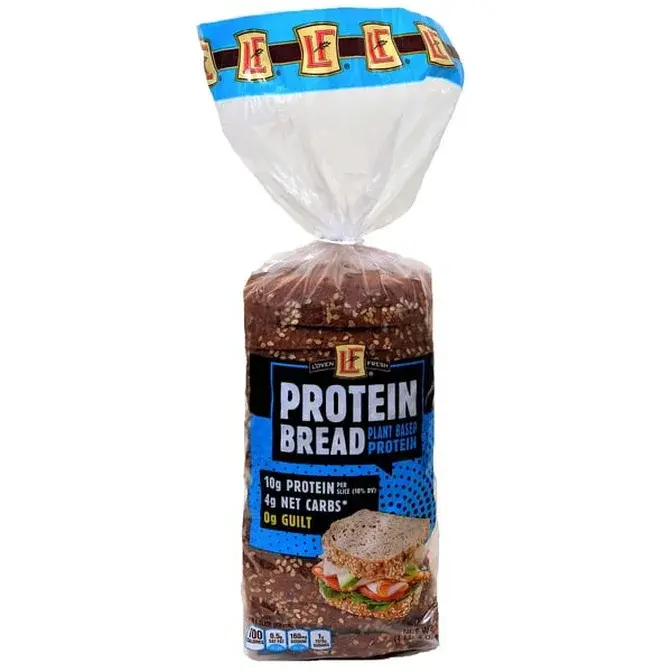So in order to fuel my body to be able to work out as much as I do, I want to eat healthy, caloric dense, protein packed food of course. I’ve got my fair share of recipes to follow but I’m always looking for new things. Especially since I don’t eat meat which can make the search for new protein filled and cheap recipes somewhat difficult.
But whenever I go online to look for stuff, the healthy things always seem to focus on weight loss or containing as little calories as possible. On the opposite side of this you’ve got gym bros who advise rating (vegan) fast food to keep up with caloric needs. But the thing is, whenever I eat a veggie burger at McDonalds I feel shit within hours despite it having enough nutrients. It’s mainly because the ingredients used are shit as well. Processed garbage versus my usual lentil pasta that I eat for lunch.
Eating healthy is not just losing weight. It can be gaining weight or maintaining weight as well, but that seems to not be the point for many blogs, vids and articles.
Legumes, my vegan comrade. Legumes are cheap, high caloric in many nutrients, a lot of variety, and conserved can last for years.
Maybe some weekend or something go to an specialized legumes shop, buy kilos and kilos, and safe them for the basic energetic recovery meals.
Legumes are the GOAT. I wouldn’t be the same if I didn’t have my lentils anymore. But I should include more legumes into my diet, yes. I also want to grow them myself as soon as I have a garden.
Chickpeas are a MUST. And Azuki are pretty awesome too. I am from Catalonia, where we have a huge variety of beans, and chickpeas, which is incredible, and even more if I expand on Spain.
There’s also a lot of recipes, and Indoasian cuisine is super good with legumes too,often being overlooked by even us vegans. Which reminds me, that I have overlooked Chinese tofu + legumes cooking, which I’m sure there’s a lot of.
Interesting, because as an American vegan the vast majority of the food I make is Indian and second most is Chinese, lol.
You should look up Ethiopian cuisine. Lots of vegan dishes with amazing tastes.
Thank you! I’ll definitely take a look
I love ethiopian food. So many tasty lentils.
Capitalism rely on perfect information of the customers. If the customers do not know which food or nutrition are healthy or unhealthy, then the food business companies can make more money through scam and meaningless slogan. The current global Capitalist system is built on deceit where a person cannot accept anything at face value.
I’ve run into the same problem and have basically resorted to just liquifying everything I need into a smoothie that’s calorically and nutrient dense.
Some fruits (varied depending on what nutrients you want to focus on/have available), some peanut butter, milk, maybe some veggies. Very calorically dense, and very nutritionally healthy.
I’ve thought about making a big ass soup with everything you need but I think I would want more variety in my food eventually lol
Don’t scoff at soup though, there are plenty of varieties that incorporate the perfect balance of fat, carbs, and proteins, such as New England Clam Chowder. Also a simple beef of chicken stock can be varied immensely based on what carb (legumes, beans, rice, pasta), vegetables, spices, and meat you decide to use. Chicken noodle soup, rice and meatball soup, bean and beef soup; all from the same stock.
You’re missing out in the vast majority of fiber though and don’t overlook that very important part.
That’s not true at all. Blending does not remove any fiber, nutrients, or calories. The fiber removal “fact” originated from a myth in the 80’s that has been debunked many times.
You may be thinking of juice and juicing. That is where the fiber is removed.
Sources: https://www.webmd.com/diet/whats-the-difference-between-juicing-and-blending
The Ohio State University: “Juicing vs. smoothies: which is better for you?”
The main downside is that if there are a lot of sugars in your smoothie, they aren’t bound up with the fibre and can affect blood sugar as they are digested much faster than slowly over time
Again, that is not how fiber and sugar work when blended. Please just look up this topic, because that is not how food and digestion work.
Coupled with the fact that fructose does not act like a refined sugar and is not unhealthy at the levels found in daily fruit intake, unlike even a few grams of refined sugar.
I looked at the link you provided. That’s precisely what I said. No need to be hostile. “Blending smoothies won’t cause your blood sugar to spike as much as with drinking juice, but they can raise your blood sugar levels because of all the fruit. To help keep sugar in check, use no more than two servings of fruit per smoothie.”
I’m able to see a nutritionist due to having decent insurance, and while I never went over blended food with her, she did give me some information with respect to fruits and blood sugar spikes. She said that eating some fats or proteins (I can’t remember if it was one or the other or both) along with the fruit should reduce/prevent the blood sugar spike. Considering Comrade Salad said they mix in peanut butter and milk, which should add fat and protein, the blood sugar spike shouldn’t be much of an issue.
I might’ve shared this with you already, but I also had to do my own research when it came to being vegan and bulking up, and feeling full. Bottom line: eat more protein and fibrous carbs, and less starchy carbs.
Here’s a list I made of the sorted highest protein per carb foods.
Food Protein per carb Vital wheat gluten 5.75 Tofu 4.00 Seitan 3.60 Edamame 1.29 Nooch 1.17 Spinach 0.78 Bok choy 0.67 Lentils 0.45 Broccoli 0.43 Black beans 0.36 Chickpeas 0.32 Lettuce 0.31 White rice 0.10 Learn to make seitan at home, and you’re all set. Or buy tofu in bulk.
I support all these except spinach. Oxalates will fuck you up and spinach has more oxalates than pretty much anything else we eat. Like what’s it even good for? Blending up into dip so you don’t feel as unhealthy for eating a bowl of fat? Adding to salads to add a different tint of green? Giving you kidney stones? Eating it raw feels like eating the leaf version of sandpaper.
It’s just wannabe bok choy leaves anyway. Like seriously bok choy is… It’s just better… in every conceivable way. Super low on oxalate levels. Tastes better. Better mouth feel. Doesn’t make you piss razors. Makes Kimchi. Green leafy bits on one end and then thick crunchy water bits on the other end so it’s like dual purpose. Looks good damn adorable with it’s chubby bottom end and big floppy leaves on top. Has way more water in it so helps you stay hydrated. Did I mention it doesn’t make you piss razors?
This concludes my spinach hate and bok choy love post.
You should look up Dr. Michael Greger. He runs a website and youtube channel called nutritionfacts.org that aggregates information on dietary science, focusing on the health benefits of eating whole-food plant-based (WFPB) (which specifically does not include cooking oils). He has also put out two books (with corresponding cookbooks), one titled “How Not To Die” and the other “How Not To Diet”. I have only read the forward to the latter’s cookbook, which condenses the information into just a few pages. I have also used some of the recipes which I thought were some of the tastiest recipes I’ve used out of a book. However, I will say that recipes feel a little redundant for WFPB since every dish is essentially a variation on legumes + grains + leafy vegetables + starchy vegetables (+ broth for a soup/stew/chili).
Regarding you question about calories and protein:
- In general, if you eat a balanced WFPB diet of equal parts of the above, you will not have a protein deficit; however, I don’t know if this applies to trying to bulk up at the gym where you would need more protein to build muscles. Legumes have some of the highest protein per mass of any WFPB food (as do some seeds/nuts), but the highest out of every food is seitan which if I remember correctly is 90% or above protein by mass since it is essentially the gluten sifted out of regular flour. (Seitan is not quite WFPB but it should still be very healthy unless you are gluten intolerant or you eat so much that you get protein toxicity.)
- In general, WFPB foods are calorically dilute (with either fiber or water) compared to either junk food or animal-based foods. If you are switching to WFPB from something else, you literally have to eat more than you are used to or you will have a calorie deficit. If your food intake is truly WFPB with no processed oils you should not be able to gain weight above a certain level because of the amount of fiber in your diet and the physical volume constraints of your digestive system compared to the low calorie-density of WFPB foods. (Always eating WFPB is extremely difficult because you can basically never eat out at a restaurant. I also don’t exactly follow WFPB since I eat bread/tortillas and eat out sometimes, but I use it as a starting point for when I am cooking at home.)
- Personally I find whole grains to give me a stronger sense of satiety and energy than any other food type, since they are high in carbs and fiber but low in water mass. They also have some protein. If you are feeling hungry/low energy/like you are not intaking enough calories, I’d probably recommend increasing your intake of grains. In comparison, making a soup/stew/chili dish will give you a sense of fullness but you will consume significantly fewer calories because the physical volume of you stomach will be filled with more nutritionally empty water—so great for weight loss but not for gaining or maintaining weight. Similarly, you can lose weight on a diet of white potatoes (no added oils) since they are so satiating that you will end up with a calorie deficit.
- The most calorie dense WFPB foods would be anything with oil, which would be nuts, seeds, peanut-butter (I think it is still WFPB because the processing is very light and does not discard anything), and avocados. If you are worried about maintaining or gaining weight with a healthy WFPB diet I’d recommend increasing your consumption of these foods.
- WFPB does not include cooking oil for essentially two reasons. First, oils are highly calorie dense when they are not in a whole food bound up with fibers and other nutrients, it is easy to gain weight. Second, there are some negative health effects (especially for the circulatory system) of eating too much processed oil (even olive oil), however oils that are solid at room temperature are worse. If you’re extremely worried about your weight being too low, you could include a small amount of olive/canola oil in your diet to gain some weight without too much risk.
As a disclaimer, you should not take this as medical advice (I am a non-professional operating from memory). There are also different schools of thought in nutrition so different health professionals may give different answers based on when they learned nutrition and how in-depth their studies were. You should look into the people on which I am basing my suggestions and see what you think yourself. In addition to Dr. Michael Greger, some other proponents of WFPB (or something similar) I can think of off the top of my head are Dr. Neal Barnard, Dr. Caldwell Esselstyn, and Dr. Dean Ornish.
This is good advice… there’s also a nutritionfacts app which is good.
Ok so everyone is already covered beans and stuff so I have another possible suggestion… Look for… And hear me out… KETO friendly foods that aren’t meat based. Keto isn’t about cutting calories but just not having carbs which means fat and protein. Like for instance, I get this bread from Aldi’s that’s “protein bread” that is primarily marketed as being keto friendly (it right next to the other keto breads in the store lol) but it’s not low calorie. 4g carbs per slice but 10g protein. That’s at bare minimum 20g protein for a sandwich if you have nothing else to add protein. And it’s not because it’s made with a bunch of weird shit and non-digestible fake carbs. It’s got like a bunch of nuts and stuff mixed into it and it’s super dense feeling. It’s actually so much “meatier” than regular bread I don’t even crave regular bread even when I’m not doing keto. Like I just only use this bread for most sandwiches now.

Or I may be using the wrong search terms of course
You’re good.
The food quality is often poor in America and the West, it’s true.
learn how to make the veggie fast yourself at home and have it ready so you just heat it uo real quick
Oh wait, I can still see @DankZedong@lemmygrad.ml’s comments?
Maybe I should make amends to him after reacting to how he used his height for intimidation purposes or… something. I forget the details because it just sounds like Internet drama on my part.
deleted by creator
True, I should. Whatever. I don’t care anymore. I should overlook it for now and try to maintain good relationships with others here. Tell DankZedong that I’d be fine with him not-blocking me or something.









